How to Make a Stopped Dado Jig for Any Router

Note: All projects performed following instructions found on this site are done at your own risk. Learn more
Everyone loves a good woodworking jig, especially when it's made out of scrap wood. For this router jig I needed to make dados specifically for inset shelving dividers in a carcass I'm building for a media console.
This stop dado jig can be built to suit any woodworking router and is adjustable for the width of your material.
*Note I built this jig specifically to fit my Triton 3.25 HP Dual Mode Router, but any plunge router can be used as long as you adjust the width of the guide rails.
Note: As an Amazon Associate, I earn from qualifying purchases.
Step 1: Prep Base

For this build I used a scrap piece of 3/4″ sanded plywood measuring 16″ x 24″. I knew my projects would be no wider than 20″ so a 24″ base would give me more than enough room. I found the center of the panel and marked it out.
Step 2: Router Base


To determine the spacing of the runners, I measured the base plate of my router. In the case of the Triton 3.25 HP Dual Mode Plunge Router the base was 7-1/16″.
I’m using a business card as a spacer so I’ll bring up that width to 7-1/8th (plus the math is easier). I then cut two pieces of scrap 3/4″ plywood to 1-1/2″ x 24″.
Using a speed square, CA Glue and an activator, I set the first runner. Then attached it permanently with the DeWALT 18 Gauge Brad Nailer.
I then put the router against the first runner, added a business card spacer and repeated the steps to add the second runner.
Step 3: Sliding Channel
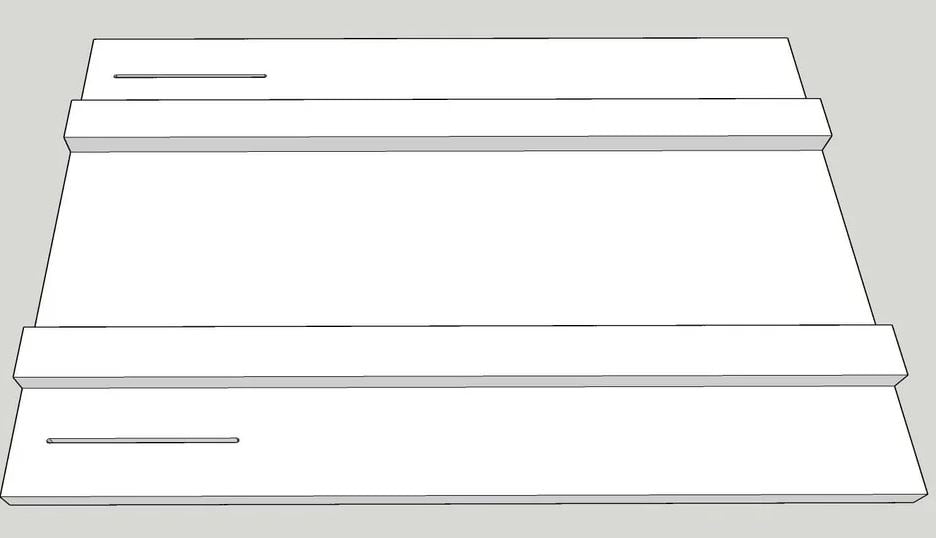
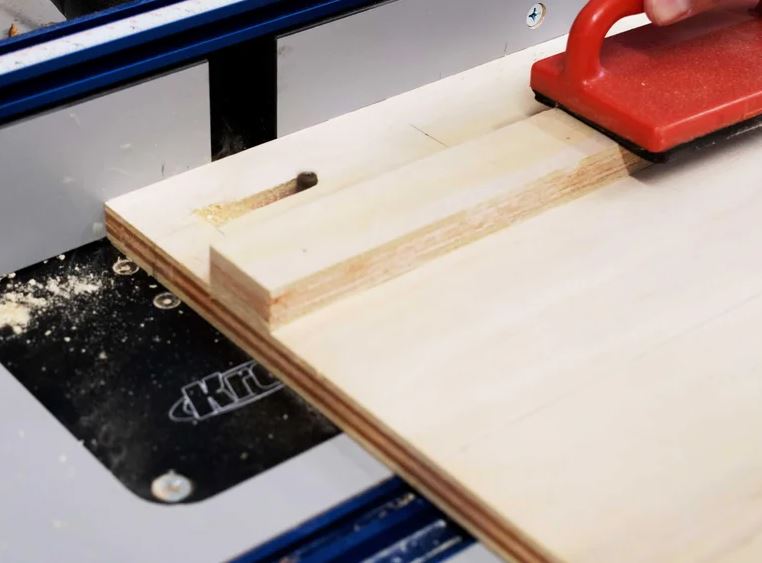
With the runners in place, I then found the midpoint and marked out a 6″ line to be used as a channel for the locking slider.
The slider will be used to adjust and lock the width of the work surface. I inset the channel 1″ from the end.
Using a router or a router table, I used a 1/4″ straight cut bit to cut the channel for the T-bolt and star knob.
Step 4: End Plate

I then cut another strip of 3/4″ plywood to 2″ x 19″. This will attach centered on the end opposite of the channels just cut.
It’s important that the top of the end plate is flush with the top of the runners.
The overhang is specifically hooking on to the work surface.
Step 5: Locking Slider
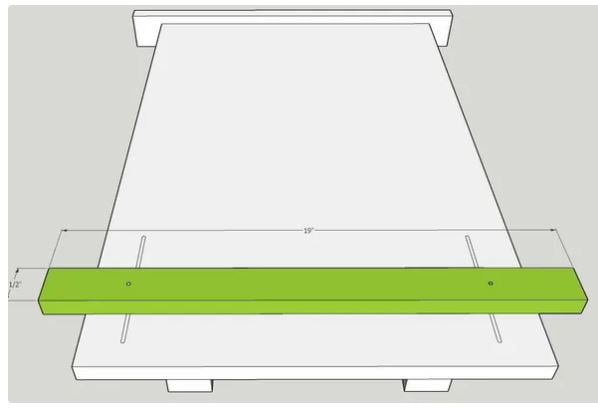

I cut another strip of 3/4″ plywood to 1-1/2″ x 19″. Flipping over the jig with the bottom facing upward, I then centered the locking slider and clamped it into place.
Using a brad point drill bit and my DeWALT 20v Max XR Drill Driver, I pre-drilled holes through the locking slider to fit the threading for the T-bars.
With the holes ready, I added the T-Bars and 5 Star Stud Knobs to both channels.
Step 6: Slider Guides
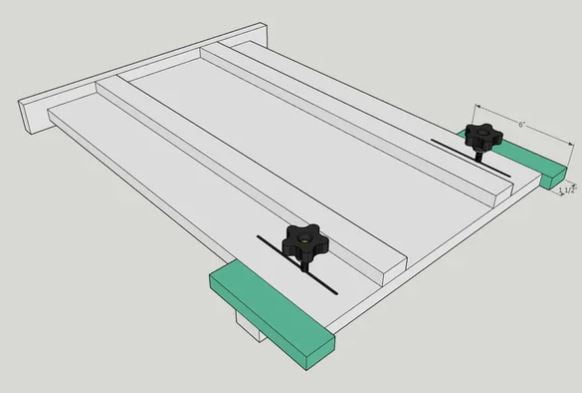

I then cut two more pieces of 3/4″ plywood to 1-1/2″ x 6″. These slides will hold against the frame and keep the T-Bars and Knobs relatively equal when in use.
With the slider locked in a parallel position, I then attached the slider guides with the brad nailer.
Step 7: First Time in Use

Before you use your jig for the first time you will need to cut your initial dado channel into the jig itself.
Set up the jig on a scrap piece of material and then plunge your router and make a few passes to punch through the 3/4″ plywood.
Don’t go for it all at once our you’ll have significant blow out on the underside. Make sure to note the distance from the End Plate to where the router bit cut the jig the furthest.
This distance will give you the measurement of how far the edge of the base plate is from the cutting blade of the router.
Step 8: Cutting the Stopped Dado



With your material secured in place, slide the End Plate against the bottom of the piece and then pull the Locking Slider down tight. Then turn the knobs and lock the jig into place. I secured my jig to the work table using speed clamps.
Just remember to adjust the depth of your router bit keeping in mind that you have a 3/4″ depth of the jig to overcome to cut into your piece below. With everything lined up and in place, plunge your router and go.
When the routing is all finished you are left with a rounded end from the shape of the router bit. Unfortunately, you’re stuck with good old hand tools for this. I used a sharp set of chisels and my mallet to quickly square off the ends.
With the ends cleaned up, it’s just a matter of dropping that 3/4″ shelf support in for a nice and snug fit before a glue up!
Step 9: Things of Note
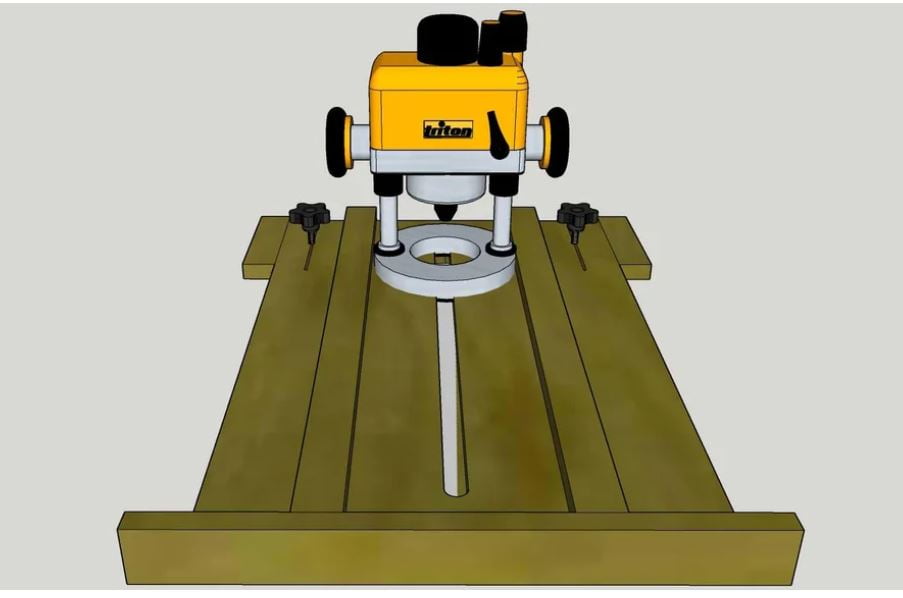
Depending on the length of the dado you need and the distance from the router bit to where the router base plate hits the End Plate, you might need to run the jig in one direction, and then take it off and run it the opposite direction. Or just make a longer jig!
